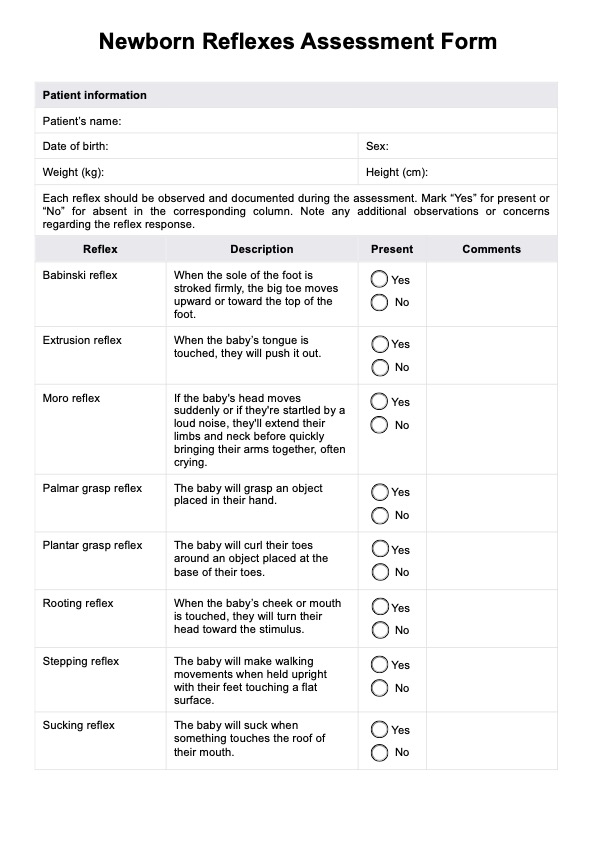Reflexes should be present shortly after birth and continue to develop in the first few months of age. However, the timeline by which a reflex disappears might vary, especially in preterm infants.

Newborn Reflexes: Nursing Assessment
Use our Newborn Reflexes: Nursing Assessment form to document and track reflex development easily. Assess newborns and monitor early milestones today!
Newborn Reflexes: Nursing Assessment Template
Commonly asked questions
Some normal reflexes include the Moro reflex (startle response), rooting reflex (turning the head toward a touch on the cheek), and sucking reflex (automatic sucking when something touches the baby's mouth).
Others include the palmar grasp reflex (baby's hand closes around a finger), plantar grasp reflex (toes curl when the sole is touched), stepping reflex (making walking motions when feet touch a surface), and the tonic neck reflex, also known as the fencing reflex (when the baby's head turns, same-side arm stretches, opposite arm bends).
While some variations are normal, the persistent absence of specific involuntary movements may warrant further evaluation by a healthcare professional.
EHR and practice management software
Get started for free
*No credit card required
Free
$0/usd
Unlimited clients
Telehealth
1GB of storage
Client portal text
Automated billing and online payments











